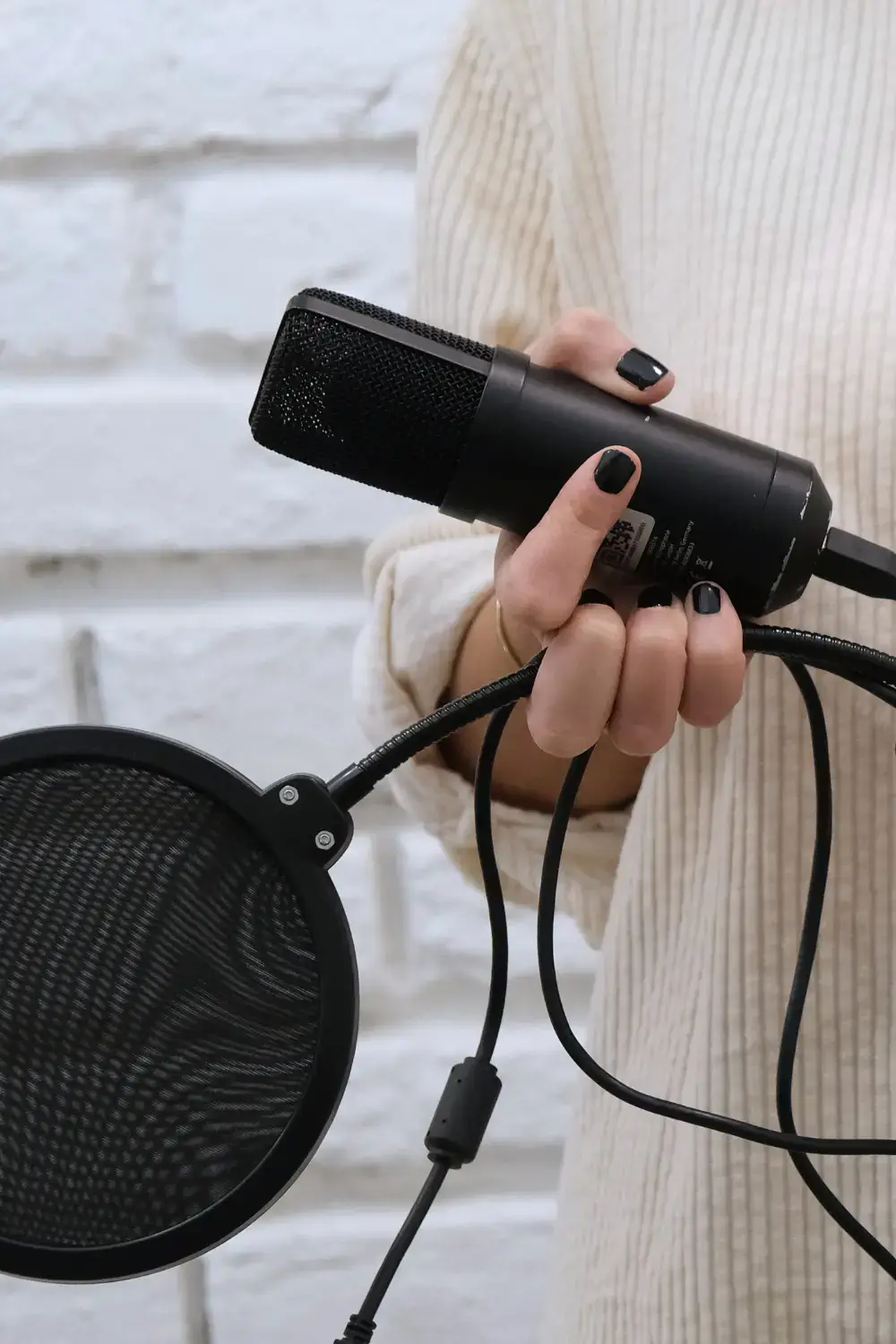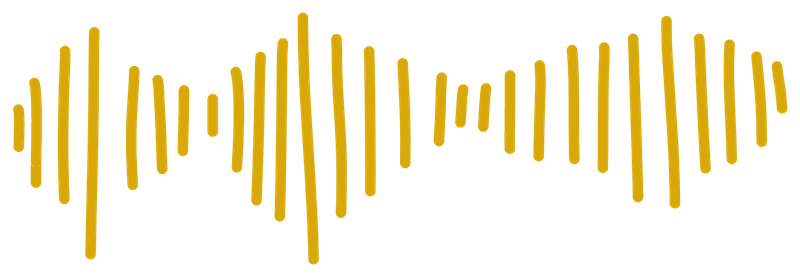Podcast Recording Tips: 7 Ways to Sound More Professional
Published Dec 27, 2023
Essential podcast recording tips aren't just about buying expensive gear.
In this guide, you'll learn exactly how top podcasters create professional-sounding episodes, from setting up your recording space to choosing the right equipment—all without breaking the bank. We've stripped away the unnecessary tech jargon to give you only what works.
Let's get started.

1. RECORDING ENVIRONMENT
Find a Quiet Space: Choose a room with minimal noise and echo. Carpets and drapes can help absorb sound. Avoid rooms with hard surfaces like tile or hardwood floors, which can cause echo.
Soundproofing: Use acoustic panels or foam to minimize external noises. For a home setup, blankets or sofa pillows arranged around you can work well. A heavy rug and thick curtains can also help block out outside noise.
Keep Comfortable: Make sure your recording space is comfy. Too much heat or humidity can be distracting and mess with your gear. Keep a glass of water nearby to avoid dry mouth.
2. MICROPHONE SELECTION
If you want a great listening experience for your audience, get a microphone! Sure, you can also record the audio from the computer or phone directly. But then even the post-production editing might not be able to help with fixing all the background noises etc. Better than no microphone, you can use simple Apple EarPods with built-in microphones. The output sound from them is great; for podcast beginners, it’s enough, trust me!
Basically, there are two types of microphones: USB and XLR mics.
USB vs. XLR Microphones: USB microphones are plug-and-play, making them easy to use for beginners. XLR microphones require an audio interface but offer superior sound quality and greater flexibility for advanced setups. An XLR setup allows for more professional audio control and can be upgraded over time.
Basic Options: Simple choices like Apple EarPods with built-in microphones can suffice for beginners. Just remember to keep them close to your mouth and be careful not to let them touch your hair or clothes.
Advanced Options: For better sound quality, invest in a high-quality microphone. USB microphones like the Blue Yeti or Audio-Technica AT2020USB+ are excellent starting options, providing good sound quality without needing additional equipment. These microphones are easy to set up and use, making them ideal for beginners.
See our mics recommendations in our article about The Best Podcasting Microphones.
Microphone Accessories: Consider using a pop filter to reduce plosive sounds (the bursts of air that occur when pronouncing 'p' and 'b' sounds). A shock mount can help isolate the microphone from vibrations and handling noise, ensuring cleaner audio.
Grab our FREE Podcast Planning Worksheet for a more structured approach!
3. HEADPHONES
Some people believe that headphones are unnecessary. You can observe this during Zoom meetings with colleagues and friends when some individuals choose not to use them. However, have you ever noticed how uncomfortable it can be to hear your own voice echoing from someone else's computer when they haven't muted themselves? It can be quite annoying, right?
So, why to use headphones:
Monitoring Audio: Use headphones to monitor the audio quality during recording. Closed-back headphones are ideal as they prevent audio leakage into the microphone, ensuring clearer sound. Open-back headphones, while offering better sound quality, can allow sound to escape and be picked up by the microphone.
Remote Recording: If recording remotely, headphones are crucial to prevent the other person's voice from being picked up by your microphone, which can cause audio issues. Ensure all participants use headphones to maintain clear and separate audio tracks.
Comfort and Quality: You’ll be wearing these for a while, so make sure they’re comfortable and have good sound quality.
4. PROPER POSITIONING OF YOUR MICROPHONE
When talking about the proper positioning of your microphone, we mean two things:
-
Distance from Mouth: Maintain a consistent distance of 15-20 cm (about 6-8 inches) from the microphone to ensure consistent sound quality. Too close, and you risk picking up unwanted noises like breathing and plosives; too far, and your voice may sound distant and echoey.
-
Angle and Direction: Position the microphone at a slight angle to minimize plosive sounds caused by air coming from your mouth. This can be achieved by speaking slightly past the microphone rather than directly into it. Experiment with different angles to find the best position for your voice.
Microphone Stand: Use a stable microphone stand or boom arm to hold the microphone in place. This helps maintain a consistent position and reduces handling noise. A boom arm also allows for more flexibility in positioning and can free up desk space.
5. RECORDING SOFTWARE
Basic Recording: For beginners, user-friendly software like Audacity or GarageBand (for Mac users) is recommended. These programs offer intuitive interfaces and essential editing tools. They allow you to record, edit, and export your audio files easily.
Advanced Software: As you become more experienced, you might want to explore more advanced software like Adobe Audition, or Logic Pro X. These programs offer more sophisticated editing tools, effects, and multitrack recording capabilities.
Remote Recording: For remote interviews or discussions, use platforms like Remotely.fm, Zencastr, or SquadCast. These services provide high-quality audio and video recording options, ensuring clear and synchronized recordings even when participants are in different locations.
Recording Tips: Before starting, test your recording setup to ensure everything is working correctly. Check your microphone levels and adjust as necessary to avoid distortion or low volume issues. Make sure all participants are aware of the recording environment requirements.
6. BACKUP RECORDING
Always Have a Backup! Imagine losing your recording because of a glitch. Nightmare, right? Use a secondary device to record a backup. This can save you from losing valuable content due to technical issues with your primary recording setup. You can use a separate audio recorder, another computer, or even a smartphone.
Your future self will thank you!
Consider recording your backup on a different platform or device. For example, if you are recording on your computer, use a digital recorder as a backup. This reduces the risk of losing your recording due to software crashes or hardware failures.
Regular Saves: Save your recordings regularly during the session. If your software supports it, enable auto-save features to minimize the risk of data loss.
7. INTERNET CONNECTION
Stable Connection: For remote recordings, a stable internet connection is crucial. Platforms like Zoom or Skype can be used, but ensure you have a good connection to maintain clear communication and recording quality.
Bandwidth Management: Close unnecessary applications and background processes that might consume bandwidth.
Platform Settings: Adjust the audio settings on your recording platform to prioritize sound quality. Many platforms offer options to enhance audio clarity, reduce background noise, and improve overall recording quality.
ADDITIONAL PODCASTING TIPS for your first podcast recording
Pre-Recording Checks: Test your equipment before starting. Conduct a short test recording and playback to check for any issues. Verify that all participants have the correct setup and understand how to use their equipment.
After Recording: Save your recordings immediately. Back up your files to multiple locations like an external hard drive or cloud storage. Review the recording to ensure it meets your quality standards.
By following this technical checklist, you'll be well-prepared to create podcast recordings that are enjoyable for your audience to listen to.
With the right preparation and equipment, your podcast can sound professional and engaging from the very first episode!
Check out our additional resources for more tips and guides on podcasting:
